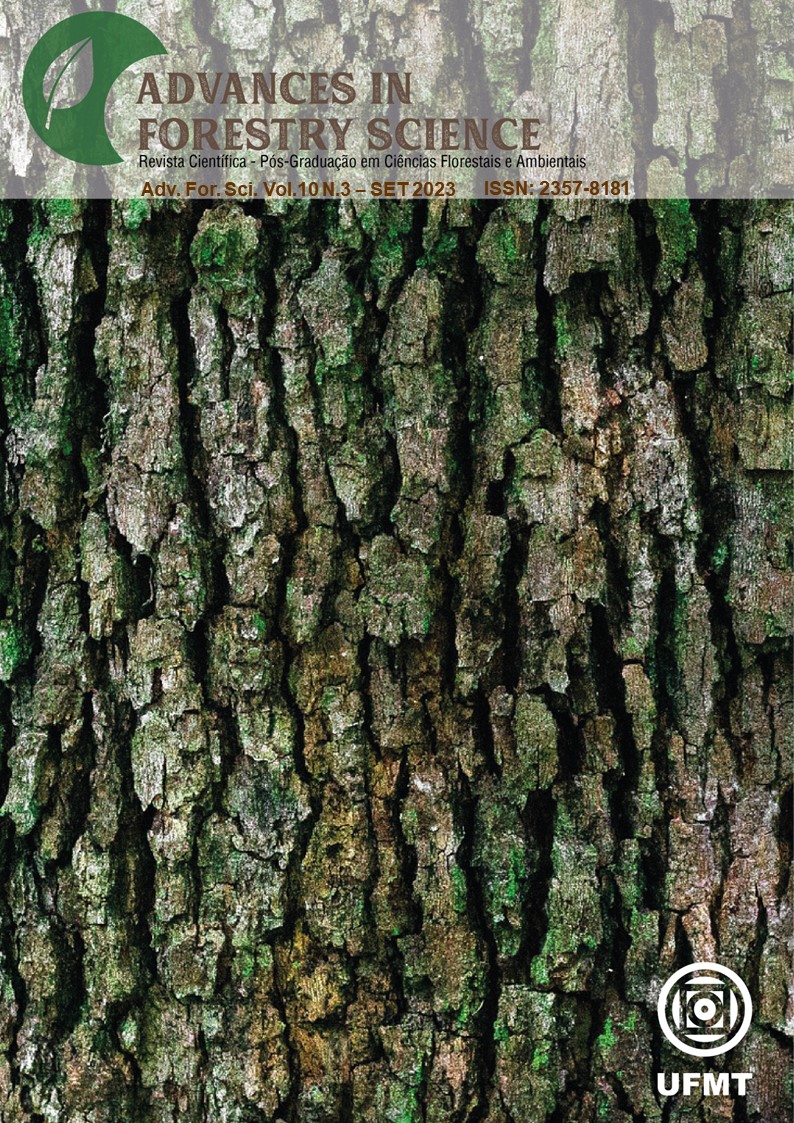Spatial behavior of tree species of commercial interest, by strata and selective post-harvest in the Brazilian Amazon
DOI:
https://doi.org/10.34062/afs.v10i3.13124Abstract
Knowing the pattern of spatial distribution of tree species is an important conservation tool for ecosystems, as it provides useful information for understanding the ecology and for assessing the stability of plant communities. The objective was to evaluate the spatial distribution of forest tree species, by forest strata and after logging. In addition to the inventory, a data inventory was carried out, where 40 plots were allocated, in which the height and DAP of all data with diameter at breast (DAP) ≥ 15cm were measured. The were divided into three classes of height strata. The spatial distribution pattern was evaluated by the spatial distribution index, whose significance was calculated by the chi-square adherence test (p<0.05). For most species, the value of the χ² calculations was greater than the tabulated χ², a standard indicator aggregated in all forest strata. The exception was specified for the species Couratari guianensis (lower stratum) and Cariniana estrellensis (upper stratum), as both presented an aggregated pattern, when not stratified, and a random pattern with the vertical classification of the forest. As for forest exploitation, the Morisita index indicated that a selective harvest did not change the pattern of spatial distribution of the species under study. Therefore, these results infer that sustainable forest management guarantees these species in the area of exploration and management.
Downloads
Downloads
Published
Issue
Section
License
All copyright must be assigned to the Federal University of Mato Grosso.

